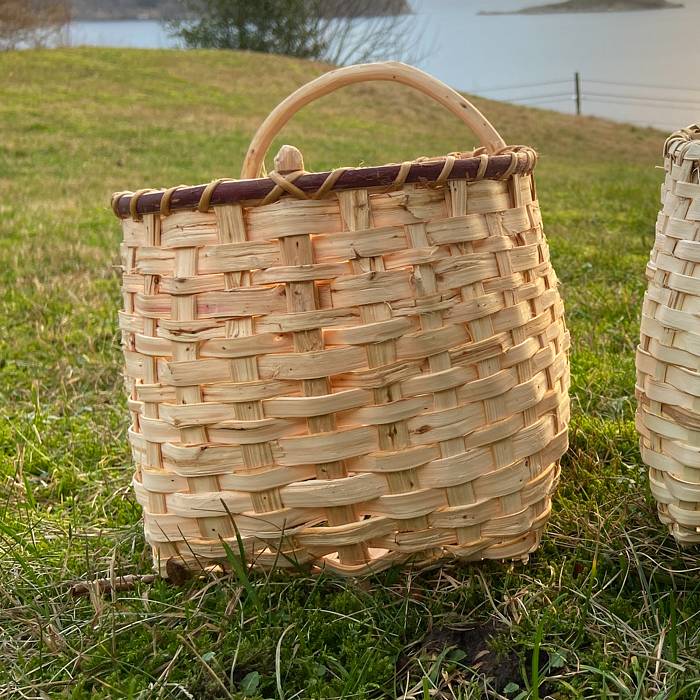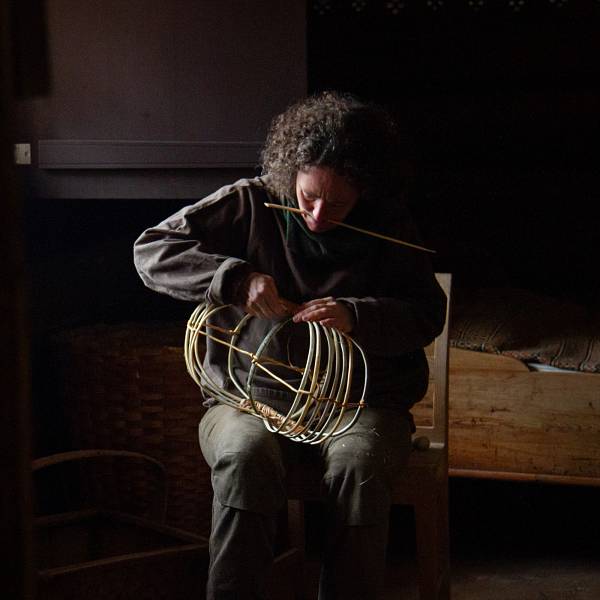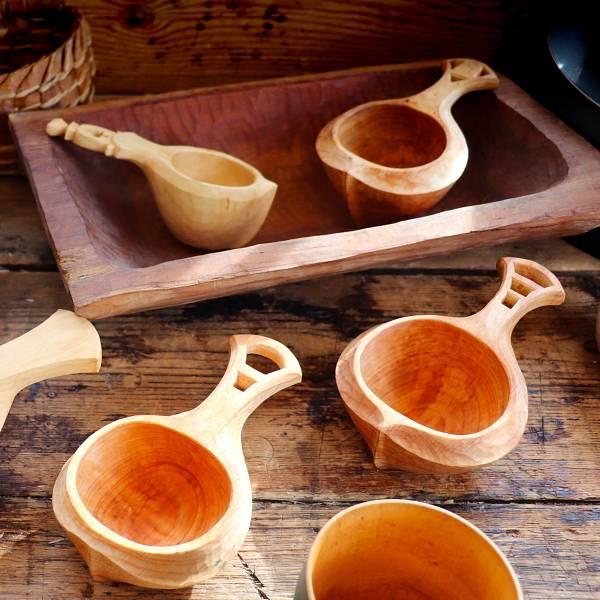
Basketry
Norwegian Split Willow Basketry Exploration
Course Overview
In Norway, as in all other places, people have always made baskets from the materials in their surroundings. No one knows exactly how old these traditions are, but we know that weaving culture has travelled all over the world and we find similarities in traditions everywhere.
The main strategy for making baskets in rural areas of Norway was to split the available material to make it pliable and soft enough to weave into baskets. There are several different techniques to make the baskets throughout the country, but the way of splitting the wood is quite similar all over Norway. The materials used are rods from different tree species, including birch, wild willow, hazel, juniper, and bird cherry, all measuring about two to four centimeters by the root.
In this course, students will explore three different styles of baskets that all come from the valleys of Østerdalen and Gudbrandsdal in eastern Norway, the aktarkorg, skjeppekorg or handlekorg. Aktarkorg was made for carrying hay in the village Vågå in the north of Østerdalen, while skjeppekorg and the other handlekorg are varieties made further south and closer to Sweden. The weave is quite straightforward and can be varied in many different sizes and shapes. Students can choose to make two smaller projects or one bigger. We will use willow. The greatest task in making this basket is splitting enough material and making it even and pliable. We will learn two different ways of splitting to make materials for the baskets. Note that a materials fee will be due at the time of class, ranging from $75 and up.
Physical Ability/Skills Needed
-
some strength in hands, use of knife
Required Tools
-
Slojd Knife (usually available in school store)
-
Scissors for branches
Optional Tools
-
Leather for knee protection


